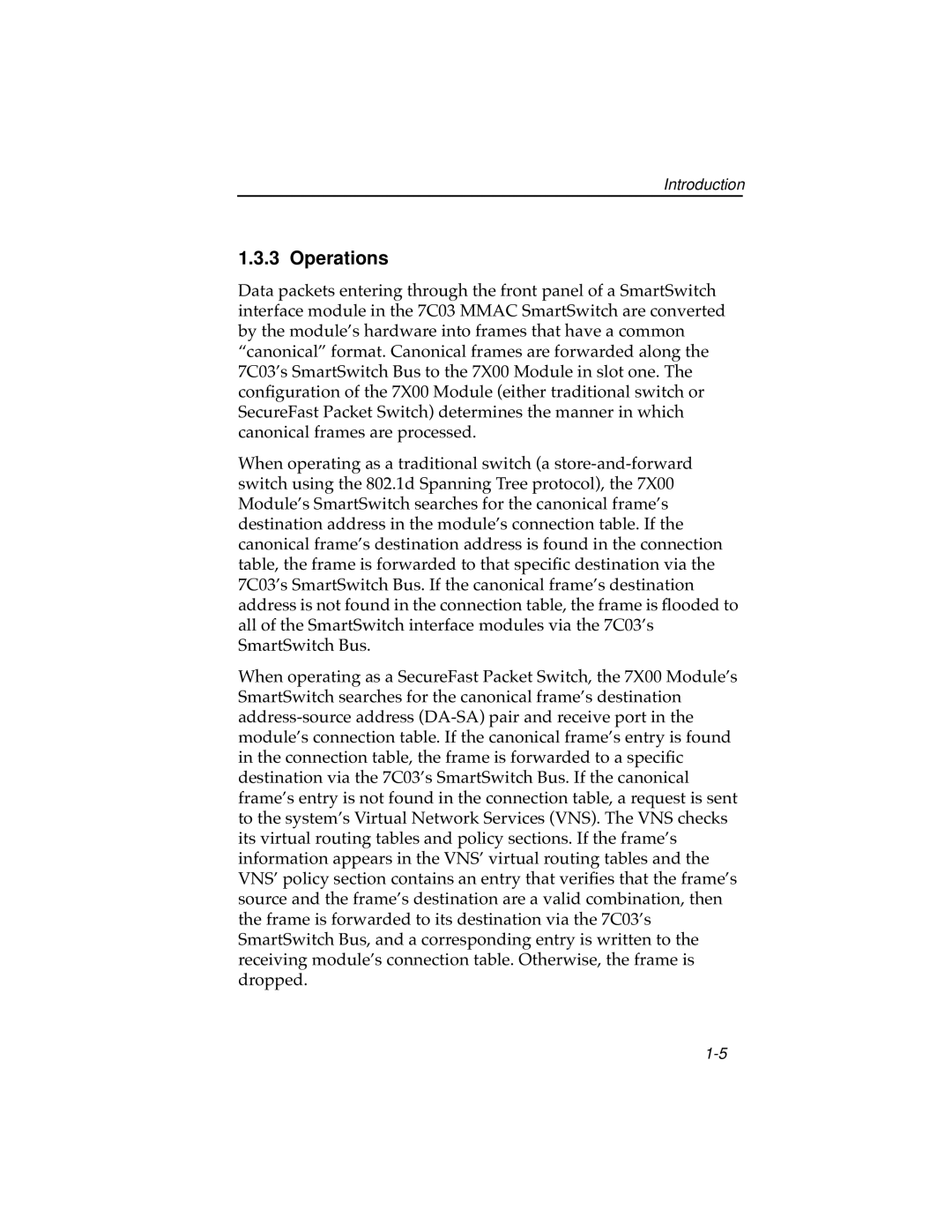
Introduction
1.3.3 Operations
Data packets entering through the front panel of a SmartSwitch interface module in the 7C03 MMAC SmartSwitch are converted by the module’s hardware into frames that have a common “canonical” format. Canonical frames are forwarded along the 7C03’s SmartSwitch Bus to the 7X00 Module in slot one. The configuration of the 7X00 Module (either traditional switch or SecureFast Packet Switch) determines the manner in which canonical frames are processed.
When operating as a traditional switch (a store-and-forward switch using the 802.1d Spanning Tree protocol), the 7X00 Module’s SmartSwitch searches for the canonical frame’s destination address in the module’s connection table. If the canonical frame’s destination address is found in the connection table, the frame is forwarded to that specific destination via the 7C03’s SmartSwitch Bus. If the canonical frame’s destination address is not found in the connection table, the frame is flooded to all of the SmartSwitch interface modules via the 7C03’s SmartSwitch Bus.
When operating as a SecureFast Packet Switch, the 7X00 Module’s SmartSwitch searches for the canonical frame’s destination address-source address (DA-SA) pair and receive port in the module’s connection table. If the canonical frame’s entry is found in the connection table, the frame is forwarded to a specific destination via the 7C03’s SmartSwitch Bus. If the canonical frame’s entry is not found in the connection table, a request is sent to the system’s Virtual Network Services (VNS). The VNS checks its virtual routing tables and policy sections. If the frame’s information appears in the VNS’ virtual routing tables and the VNS’ policy section contains an entry that verifies that the frame’s source and the frame’s destination are a valid combination, then the frame is forwarded to its destination via the 7C03’s SmartSwitch Bus, and a corresponding entry is written to the receiving module’s connection table. Otherwise, the frame is dropped.
